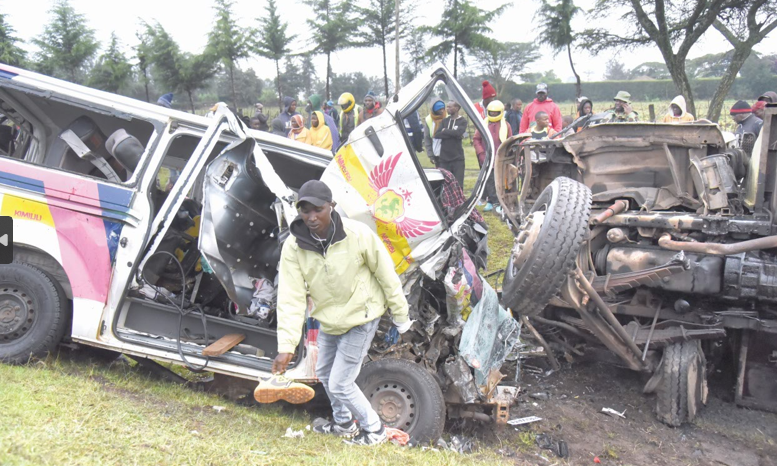More speed bumps no panacea for road safety woes
By Henry Gekonde, January 23, 2025After every major road accident in Kenya comes a predictable response – calls for more speed bumps. This automatic reaction reflects a superficial approach to road safety that we must discard. While speed bumps can be effective in specific contexts, their unselective use on Kenya’s highways only exposes our failure to adopt and enforce road safety measures that work better.
Last week’s incident on the Maai Mahiu-Narok road in the Duka Moja area of Narok County illustrates this problem. After a vehicle collided with sheep and other livestock crossing the highway – killing dozens of sheep and resulting in civil unrest and one death – local leaders immediately demanded more speed bumps. This response overlooks the reality in pastoralist areas where human and animal traffic regularly intersect with high-speed vehicles.
The concept of bumps as speed-control features on roads dates back hundreds of years to the horse-and-buggy period in England, but they only took off in the 1970s in several countries, especially in residential areas. The UK and Netherlands were early adopters in Europe, using them extensively as part of measures to “calm traffic”.
Kenya’s approach is equally overzealous. No Kenyan road engineer ever saw a smooth highway that he didn’t want to deface with ugly humps or vehicle suspension-damaging rumble strips. These things are seemingly everywhere.
Yes, international research does support the view that speed bumps can be effective in certain contexts. Studies in the UK show a 44 percent reduction in accidents in areas with speed bumps, while similar installations near schools in Guatemala reduced child pedestrian injuries by 60 percent.
In Oakland, California, a study found that speed bumps led to a 39 percent reduction in collisions, with average speeds dropping significantly and the number of speeders decreasing by an impressive 97 percent. Closer to home, Ghana’s experience is particularly relevant, with speed bumps contributing to a 55 percent decrease in road deaths on a dangerous stretch of highway.
But these success stories come with caveats that Kenya continues to ignore. Speed bumps require proper design, thoughtful placement, and regular maintenance to do their intended job.
More significantly, they work best as part of a larger traffic-calming strategy, not as a standalone solution. Our tendency has been to scatter these concrete obstacles on major highways with little regard for international standards or scientific evidence.
The problem is not just about poor speed bump installation. Kenya’s road safety challenges arise from a combination of inadequate infrastructure maintenance, substandard signage (too small or installed in the wrong places), poor driver education and inconsistent traffic law enforcement. While other nations like the United States emphasise graduated licensing, smart highway systems with real-time traffic monitoring, and strict penalties for drink-driving and other violations, Kenya relies heavily on physical barriers as a primary solution.
Even when it comes to the speed bumps themselves, our way of building them falls short of international standards. While guidelines specify heights of 100mm for highways and 75mm for urban roads, actual installations vary wildly in size and shape. This inconsistency can create new hazards for drivers and emergency vehicles. The World Road Association provides general guidelines that most countries adapt to their local needs, but in Kenya, no particular standard appears to be followed consistently.
The highway agencies’ fixation on speed bumps is worth pondering. Rather than addressing the root causes of accidents through improved road design, better driver training, more conscientious law enforcement and greater public awareness, we rely on quick fixes that create the illusion of action.
For regions like Narok, where livestock on the move frequently crosses roads, we need locality-specific solutions that consider prevailing conditions. This might include dedicated animal crossing points, better warning systems for drivers and community education about safe road use. Simply adding more speed bumps won’t prevent collisions between vehicles and animals or resolve conflicts between motorists and pastoralist communities.
— The writer is a Sub-Editor with People Daily
